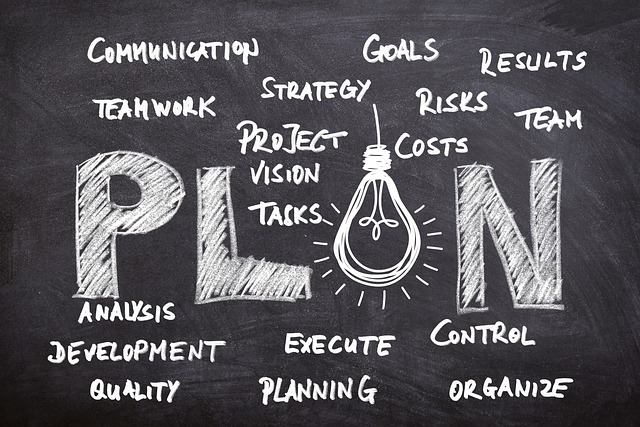The Importance of Recognition in Fostering Employee Motivation
Recognition plays a pivotal role in employee motivation, influencing how individuals engage with their work and their overall satisfaction in their roles. In many workplaces, this seems intuitive; after all, who doesn’t enjoy being acknowledged for their hard work and contributions? However, the psychological and practical implications of recognition go far deeper than mere appreciation. Understanding this dynamic can lead organizations to implement more effective strategies that not only motivate their employees, but also enhance productivity and retention.
First, let’s unpack the concept of recognition. In its simplest form, recognition involves acknowledging someone’s contributions or qualities, and this can be public or private. When leaders, peers, or the organization at large recognize an employee’s efforts, it sends a clear message: “Your work matters.” This affirmation plays a crucial role in shaping an employee’s perception of their value within the company. It fosters a safe and inclusive environment where individuals feel their efforts positively impact not just their own careers but the organization’s success as a whole.
When employees feel recognized, it triggers a range of positive outcomes. One of the most immediate effects is increased morale. Happy employees are more likely to be productive, take on challenges, and show loyalty to their organization. When people feel valued, they put in the effort because they believe that their contributions will not go unnoticed. This is pivotal in today’s fast-paced work environment where employees often juggle multiple responsibilities. In this light, recognition doesn’t just serve as a motivational tool. It creates a culture of appreciation that resonates through every aspect of the organization.
The Link Between Recognition and Motivation
The relationship between recognition and employee motivation is not merely consequential; it is indeed causal. Recognition motivates employees to sustain or increase their level of performance. This dynamic unfolds based on the intrinsic and extrinsic levels of motivation that recognition can stimulate. Extrinsic motivation is driven by external rewards, such as bonuses or promotions. However, recognition taps deep into intrinsic motivation by offering appreciation and validation, creating a sense of belonging and purpose.
Research consistently shows that employees who receive regular recognition feel more motivated. A study by Gallup found that employees who receive recognition on a regular basis are more likely to be engaged in their work. They feel more connected to their teams and strive to create value. This engagement translates into lower attrition rates, which benefits organizations financially and culturally. Furthermore, when workers internalize this recognition, they develop a sustainable, intrinsic motivation that empowers them to take initiative and contribute creatively, thus pushing the organization towards innovation.
However, it’s important to ensure that recognition is genuine and timely. Recognizing employees sporadically or in an insincere manner can backfire. If a worker feels that recognition is merely a policy or a box to be checked, it can lead to disillusionment rather than increased motivation. Therefore, leaders must prioritize authenticity in acknowledgment. The best practices involve giving recognition that aligns with employees’ values and contributions. This tailored approach resonates more deeply and reinforces the desired behavior, fostering a motivated workforce.
Types of Recognition and their Effects
Organizations should consider various forms of recognition, each of which can appeal to employees differently. These include verbal recognition, written appreciation, awards, public acknowledgment in meetings, and even informal gestures like a simple thank-you. Each type has its own impact on motivation. Verbal recognition, for instance, serves as an immediate source of positive reinforcement. When a manager publicly acknowledges team efforts or highlights individual accomplishments during a meeting, it not only boosts the morale of the individual recognized but also motivates others to strive for excellence.
Written recognition, such as thank-you notes or recognition emails, provides a lasting reminder of an employee’s achievements. It is tangible and can be revisited, which keeps motivation alive long after the initial acknowledgment. On a larger scale, an awards ceremony can cement employees’ feelings of being valued within the organization. Such events foster a sense of community where everyone celebrates their contributions and successes together, thus nurturing a motivating atmosphere.
However, not all recognition needs to be formal. Informal gestures, like team lunches or shout-outs in a casual setting, allow for a more relaxed and engaging environment. These acts are often spontaneous and can carry a heartfelt authenticity that formal recognition might lack. Recognizing employees in various ways validates different personalities and work styles, ensuring that all team members feel appreciated in a manner that resonates with them. This versatility not only augments individual motivation but also cultivates a rich organizational culture centered around appreciation and respect.
Building a Recognition-Rich Culture
Creating a recognition-rich culture begins with leadership commitment. It’s essential that leaders model the behavior they wish to see throughout the organization. This means not only recognizing achievements on their team but also encouraging their teams to recognize each other. When managers prioritize recognition, it sets a powerful precedent that impacts the entire organizational culture.
Moreover, training for managers on effective recognition practices can significantly enhance their ability to recognize employees genuinely and timely. Training can include workshops that focus on how to provide constructive feedback while celebrating achievements. This approach not only reinforces managers’ communication skills but also empowers them to create a more motivated workforce. It instills confidence in both managers and employees that recognition is an integral part of their organizational fabric.
Regular check-ins and employee surveys also play crucial roles in developing a solid recognition framework. By proactively soliciting feedback, organizations can understand what forms of recognition employees value most. This data allows leaders to tailor recognition programs that resonate with team members, making them feel seen and valued. Additionally, it fosters an environment of continuous improvement where recognition evolves with the changing needs and dynamics of the workforce.
Challenges to Implementing Recognition Programs
Despite the clear benefits of recognition, organizations may face challenges when trying to implement effective recognition programs. One potential issue is aligning recognition programs with business goals and culture. When recognition feels disconnected from the organization’s objectives, employees might dismiss it as superficial. Therefore, organizations must articulate how recognition links to performance metrics and company values.
Another challenge is ensuring that recognition is equitable across the organization. Favoritism or perceived inequality can lead to dissatisfaction among employees. Organizations need to establish clear criteria for recognition that everyone understands. This approach promotes a sense of fairness and encourages more employees to aspire to recognition, thus driving motivation across diverse teams.
Additionally, organizations must be careful to evolve their recognition practices. What works today may not resonate tomorrow. Workforces are dynamic, and employees’ needs change. Regular assessments of recognition programs can ensure they remain relevant and impactful. By doing this, organizations can customize their approach and adapt to the ongoing feedback from their teams.
Conclusion
In summary, recognition plays a significant role in employee motivation. Organizations that invest in creating a culture of recognition reap the benefits of enhanced engagement, productivity, and loyalty. By recognizing their employees’ contributions in diverse ways, organizations can foster an environment where motivation thrives. While challenges may arise, committing to tailored, genuine recognition can transform workplace dynamics and lead to stellar organizational success.
Frequently Asked Questions
1. How does recognition affect employee motivation?
Recognition boosts employee motivation by affirming their value within the organization and encouraging them to perform at their best. It creates a positive feedback loop where employees are inspired to contribute more when they feel appreciated.
2. What are the different types of recognition?
Different types of recognition include verbal acknowledgment, written appreciation, awards, public recognition at meetings, or informal gestures like team lunches or simple thank-yous. Each type serves to validate employees’ contributions in unique ways.
3. How can leaders effectively implement recognition in the workplace?
Leaders can effectively implement recognition by making it a central part of their management style. Training, consistency in recognizing achievements, and encouraging peer-to-peer recognition are key methods to foster a recognition-rich culture.
4. What are some challenges in implementing recognition programs?
Challenges include ensuring equity in recognition to avoid favoritism, aligning recognition with business goals, and adapting practices to the changing dynamics of the workforce to maintain relevance and impact.
5. Why is informal recognition important?
Informal recognition provides spontaneous, genuine acknowledgment that can significantly enhance employee morale. It helps create a more relaxed atmosphere, where employees feel valued without the formality of structured recognition programs.



